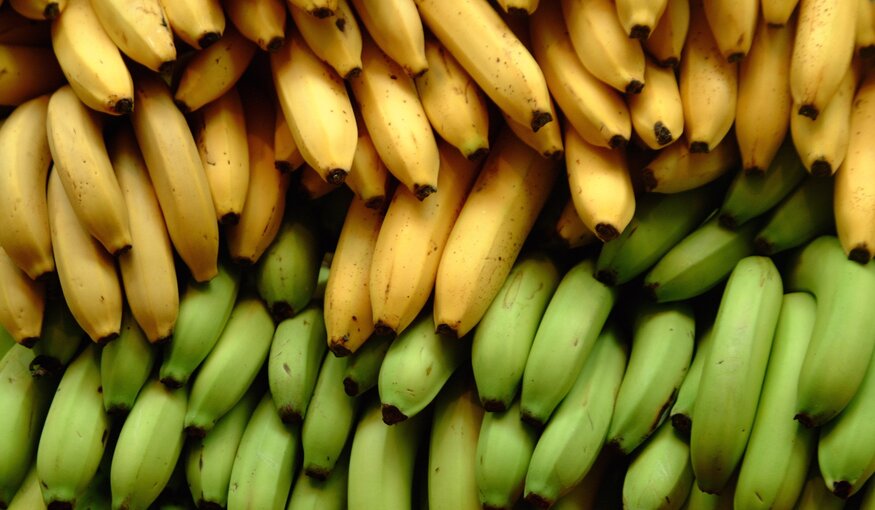Bananas, Bruised but Not Beaten

2 December 2014
At least 1,000 hectares of banana farms in Southern Mindanao have been destroyed so far by Fusarium, a disease with no known cure that organic farming advocates said was aggravated by the practice of monocropping in the region.
The Pilipino Banana Growers and Exporters Association (PBGEA) said Fusarium, also known as Panama disease, had devastated more than 1,000 ha of banana farms as of yesterday.
Madeline Dizon-Marfori, PBGEA chair, said the problem threatens the survival of at least 300,000 families, who are dependent on the banana industry, which could be Mindanao’s top export revenue earner.
In her family’s company for example, Marfori said some people have lost their jobs after about 40 ha of banana farms that showed signs of the disease have been shut down.
Philippines, 22 November 2011
For a long time, Panama disease was just a cautionary tale from the history books: a fungus that wiped out the banana industry in the 1950s, destroying the popular variety of the day, and entire economies with it. The industry bounced back with a new, immune variety, named Cavendish, that soon became just as ubiquitous. If you live in many parts of the world, Cavendish may be the only banana you have ever eaten – and every one you ate was genetically identical. Thus, when a new type of Panama disease appeared that could kill off Cavendish, along with most other banana and plantain varieties, farmers of the world’s favourite fruit trembled again. Growers in the Philippines were hit hard by the strain, with $400 million worth of damage driving many into poverty.
This time, it’s not only big companies and supermarket bananas that are at risk. Today most bananas are eaten in developing countries, and over 400 million mostly poor people depend on the fruit for 15% or more of their daily calories. Their food, their livelihoods and their traditional varieties are also at risk from the disease. In the scramble to save bananas from this incurable fungus, the world is looking to the banana diversity that was long ago eradicated from Cavendish plantations.
A big slice of this diversity can be seen at the Musa International Transit Centre (ITC) in Leuven, Belgium, operated by Bioversity International with the Crop Trust’s support. This is the world’s largest collection of banana, with more than 1,400 edible and wild types, and it’s not a simple operation. The seedless plant has to be conserved as pieces of tissue, which slowly grow back into tiny plants and must be regenerated regularly. An increasing share of the collection is also being frozen to -196°C in liquid nitrogen for the longer term.
Not just an archive on ice, the Transit Centre distributes thousands of these plants to people and research institutions, mostly in banana-growing regions far from Belgium. In fact, about a third of the diversity in the collection is sent out for use every year. This planting material is cleaned of fungi and viruses, free of charge, and carries diverse traits banana growers need.
In the Philippines, Bioversity trialled a more resistant Cavendish relative found in Taiwan. Although the plant grows slower and forms slightly smaller bunches, farmers were pleased to find that it produced a sweet banana that was popular with local buyers and suitable for export. Now researchers are collaborating to test nearly all collected banana diversity for more sources of resistance to the new strain of Panama disease. Thanks to genebanks, the world’s favourite fruit won’t be off the menu any time soon.
Category: Poverty Reduction
